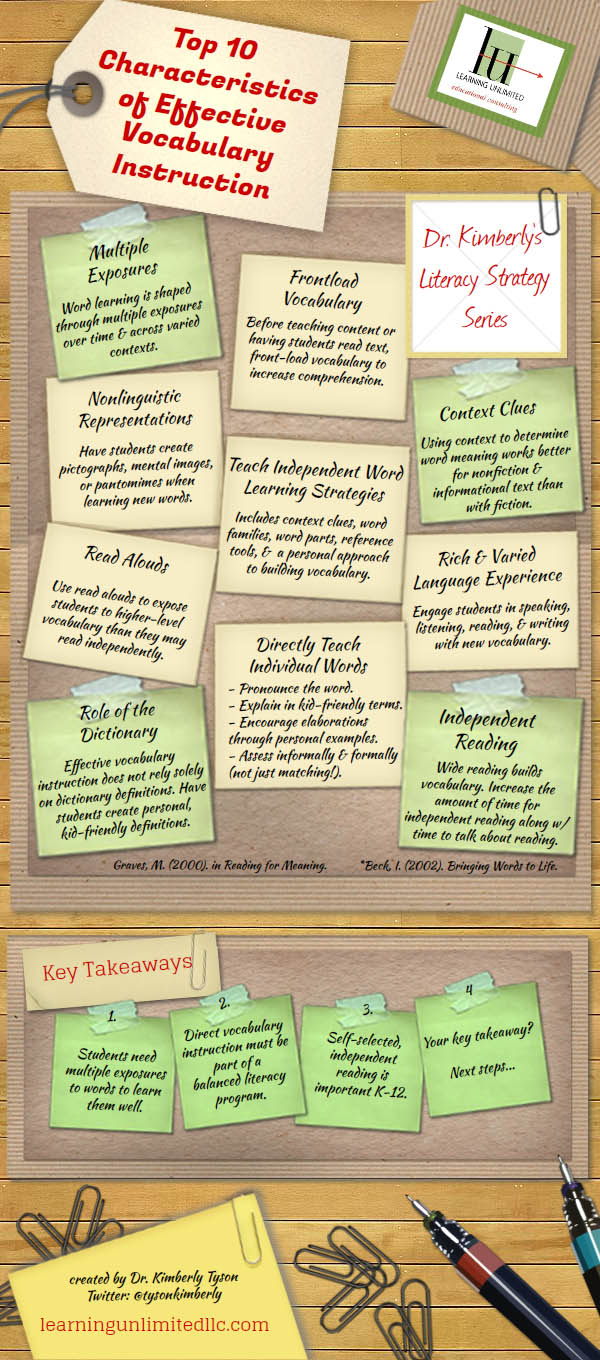
What Are The Characteristics Of Effective Vocabulary Instruction?
by Kimberly Tyson, Ph. D. of learningunlimitedllc.com
We know that there is a strong relationship between vocabulary and reading comprehension. Systematic vocabulary instruction is an integral part of a K-12 comprehensive literacy framework for instruction. I consider it a privilege to have supported many teachers, coaches, & administrators in building a community that values word learning across classrooms and content areas.
Common characteristics of effective vocabulary instruction have been documented in numerous professional journals and books. Even though research points to common elements of purposeful vocabulary instruction, recent NAEP results for vocabulary reveal that there was no significant change in vocabulary scores for 4th- and 8th-grade students from 2009 to 2011. In short, we still have a long way to go to realize marked vocabulary growth.
Effective vocabulary instruction across grade levels and content areas is key. With the increased emphasis on nonfiction and informational text as part of the Common Core ELA & Literacy Standards, vocabulary instruction will be key to supporting student success with these texts. Teachers need to be aware of research-based instructional strategies, and they need ongoing support toward implementing effective vocabulary practices.
As part of 12 Days: 12 Tools I have shared 4 templates and tools for vocabulary. These include:
- Tool 1: Top Tips for Words Walls
- Tool 2: Concept Circles
- Tool 5: Marzano’s 6-Step Vocabulary Process
- Tool 7: Alphaboxes Graphic Organizer
Top 10 Characteristics of Effective Vocabulary Instruction
You can put this infographic to use tomorrow; several immediate uses come to mind. For example, simply print and post it in your lesson plan book or on your desk, podium, or teaching table. The “Top 10″ infographic could also be used as a resource for professional development – to create conversation around effective vocabulary strategies and instructional practices.
Teachers, coaches, and/or staff developers could use the infographic as part of a shared online resource with links to effective vocabulary strategies, professional articles, blog posts, and templates.
1. Multiple Exposures
2. Frontload Vocabulary
3. Context Clues
4. Non-Longuistic Representations
5. Teach Independent Word-Learning Strategies
6. Rich & Varied Language Experience
7. Read-Alouds
8. Role Of The Dictionary
9. Directly Teach Individual Words
10. Independent Reading